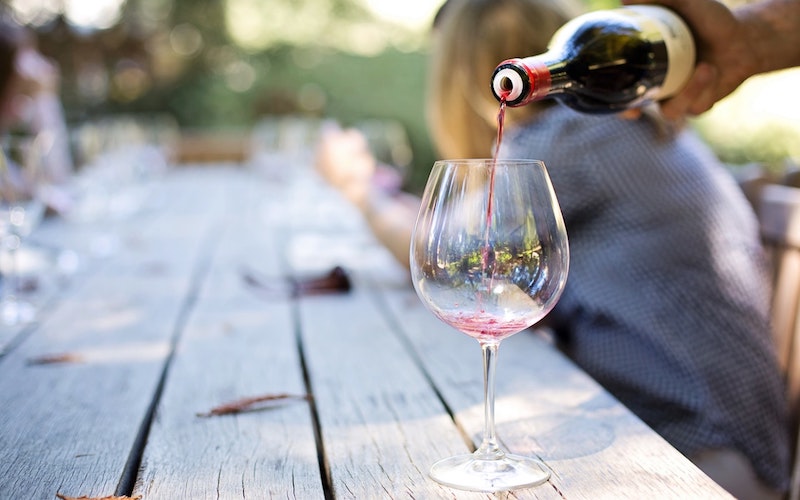The Five S’s of Wine Tasting and How to Get Started
Episode #7 of the course The ultimate beginner’s guide to wine by Paul Kalemkiarian
Welcome to Lesson 7!
Today you’ll learn about the five S’s of wine tasting.
The Importance of the Senses
Wine appeals to four senses: sight, smell, taste, and touch. Each by itself is important, but the final impression is an amalgamation of all four. What we call the sensation of “taste” involves smell, sight, and touch. However, a wine of brilliant color, for example, usually will score higher in a tasting than a wine of lesser brilliance, even if the latter is superior.
Part of the subjectivity of wine involves one’s threshold, which is different for everyone. Threshold is the ability to smell or taste various compounds in wine at minimal concentration. For instance, one taster might be able to detect a very tiny amount of sulfur dioxide aroma (which smells similar to a burned match) in a wine, while another taster will not detect it until the concentration is five times greater. The former has a low threshold for sulfur dioxide, the latter a high threshold. One’s threshold is different for every compound, and thresholds vary daily.
As with any flavor comparison, wine is very subjective. Professionals must be objective and rank a wine on its merits. It is very difficult not to rank a wine best that one personally likes. A good wine taster may rank one wine as best of several tasted but drink a lower ranked wine with lunch because they like it better. Also, it should be kept in mind that many wines might not be particularly to one’s liking on their own but will taste extraordinarily good with food. In the same vein, an ordinary wine in a beautiful setting will taste delightful, while a great wine in poor circumstances may not measure up to expectations.
The Five S’s
Use the five S’s of wine tasting together to develop your sense of the wine you’re sipping.
• See. Look at the wine. Is it light and young-looking or darkening with age? Clear or cloudy?
• Sniff. Really concentrate on the smell of the wine. In many cases, the smell is more important than the taste.
• Savor. Swirl the wine around your mouth, chew it, suck air through it…. Just concentrate on that taste.
• Spit. Accurately or haphazardly, empty your mouth of the wine to ready the palate for the next wine.
• Say. Say what you think. Discuss even your most improbable reactions. Compare them to everyone else’s.
Get Started with Tasting
Try comparing a few wines grown from the same grape but in different places. Chardonnay is grown in all parts of Burgundy, Italy, Spain, Bulgaria, the USA, Australia, and New Zealand. Compare, for example, a Chablis, a Meursault, a Californian, and an Italian—all are easy to find. Cabernet Sauvignon from Chile, Southern France, Australia, and Bulgaria might provide another interesting tasting.
You could also try the same wine from different vintages and wines of the same “appellation,” but from different producers. For example, you’ll be surprised at the variation between three or four bottles of Côtes du Rhône or Rioja.
These tastings are most fascinating and educative when done “blind” with the bottles’ identities concealed. Wrapping them in aluminum foil is possibly the easiest way, though bags may be a better bet when bottles are of recognizable shapes. Remove the “capsule” that covers the cork (this can be recognizable too) and shuffle the bottles around before the tasting. Even better, have someone else do it for you. Guessing which wine is which may be far easier than you might think. And certainly a lot of fun.
Now that you’re on the road to building your wine tasting skills, tune in tomorrow to find out the best way to serve wine.
Recommended book
Adventures on the Wine Route: A Wine Buyer’s Tour of France by Kermit Lynch
Share with friends

